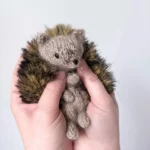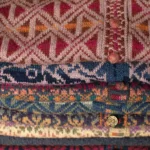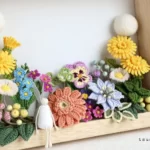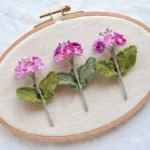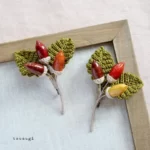The Ultimate Guide to Knitting Yarn: Everything You Need to Know
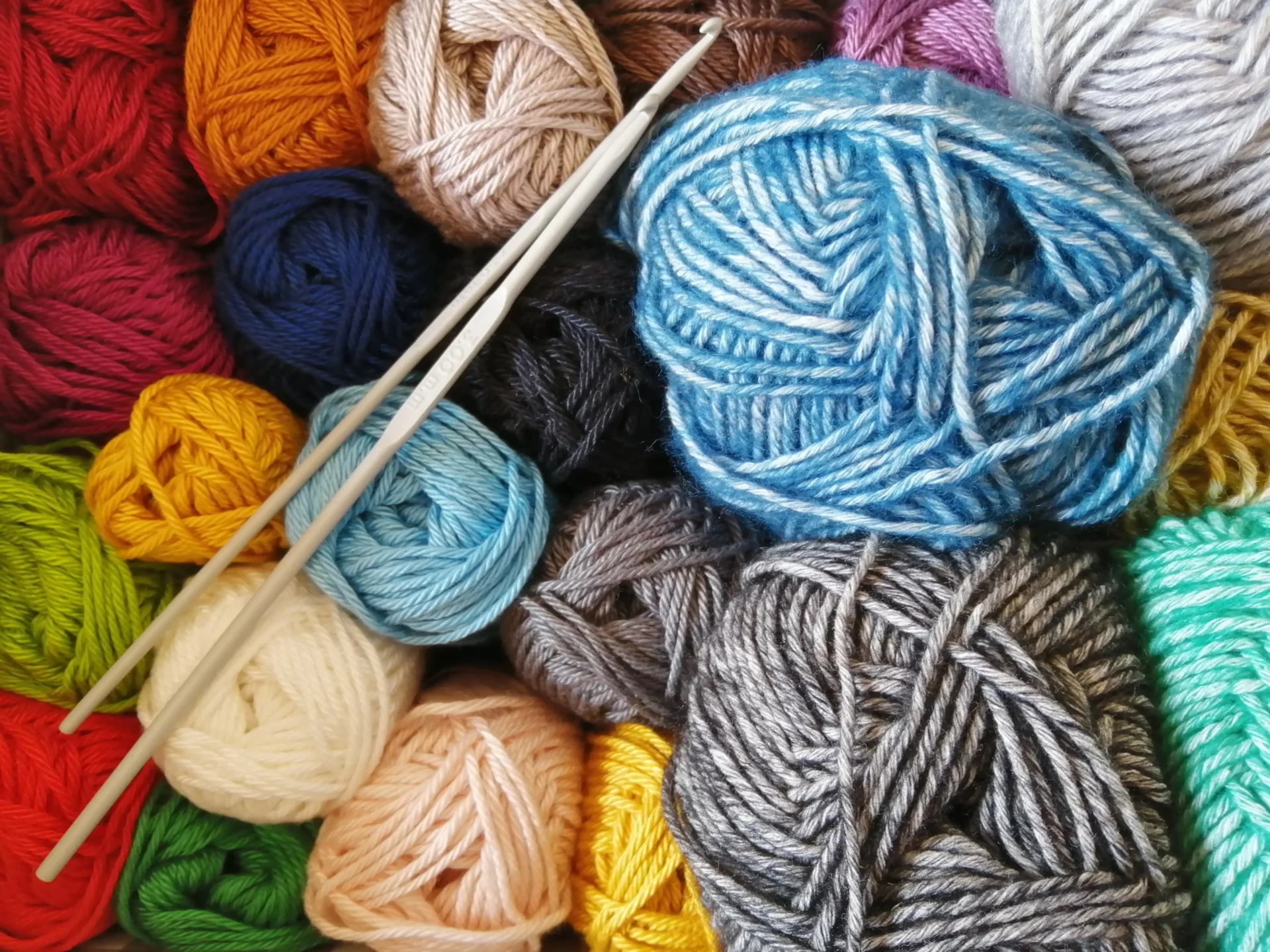
Knitting is a relaxing and rewarding hobby that allows you to create unique and personalized items. However, choosing the right knitting yarn can be overwhelming, especially for beginners. With so many different types, qualities, and brands available, it’s essential to have a guide to help you navigate the world of knitting yarn. In this article, we will provide you with the ultimate guide to knitting yarn, covering everything you need to know to get started.
Understanding Knitting Yarn: Types and Qualities
Knitting yarn comes in a variety of types and qualities, which can be overwhelming for both beginners and experienced knitters. Understanding the different types and qualities of yarn is important as it can affect the outcome of your project.
There are many types knitting yarn available that can be used for different projects. Here are some of the most common types of knitting yarn that you should know about:
Wool is a natural fiber that is warm, durable, and perfect for winter garments. It is available in different types such as merino, alpaca, and cashmere. Wool is also naturally water-repellent and elastic, making it an excellent choice for outdoor wear.
Cotton yarn is a popular choice for summer garments as it is lightweight, breathable, and has a smooth finish. It is also hypoallergenic and suitable for people with sensitive skin.
Acrylic yarn is a synthetic fiber that is versatile, affordable, and easy to care for. It can mimic the properties of natural fibers such as wool and cotton and can be machine washed and dried. It is also available in a wide range of colors and textures.
Silk yarn is a luxurious, natural fiber that is smooth, lustrous, and soft. It is perfect for garments that require drape and sheen, such as shawls and scarves.
Mohair yarn is made from the hair of Angora goats and is known for its softness and sheen. It is often used for fuzzy or textured projects such as hats, scarves, and sweaters.
Alpaca yarn is a soft, warm, and lightweight natural fiber that is perfect for winter wear. It is available in different grades, with the highest grade being the softest and most luxurious.
Linen yarn is made from the fibers of the flax plant and is known for its strength, durability, and coolness. It is perfect for summer garments and is often used for dishcloths, towels, and tablecloths.
Bamboo yarn is a sustainable, eco-friendly option that is soft, breathable, and lightweight. It is perfect for summer garments and has natural antibacterial properties.
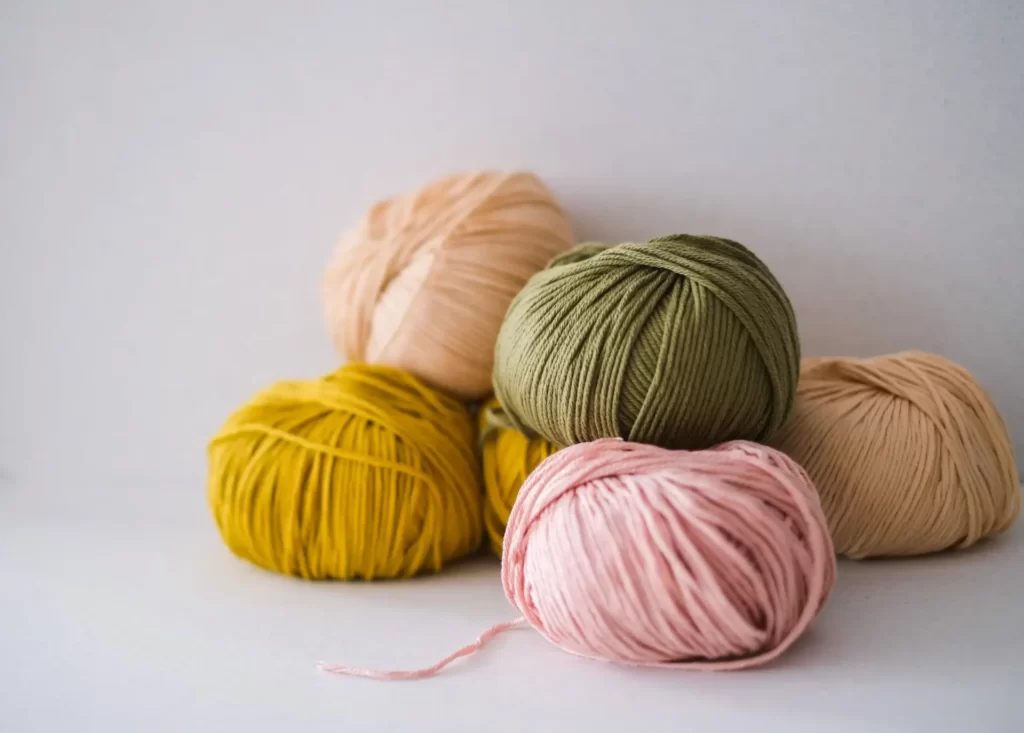
The quality of knitting yarn
The quality of knitting yarn is an important factor to consider when starting a knitting project. Here are some qualities to keep in mind when choosing a knitting yarn:
- Texture: The texture of the yarn can affect the look and feel of the finished project. Smooth yarn is great for creating clean lines and stitch definition, while textured yarn can add dimension and interest to a project.
- Durability: The durability of the yarn is important, especially for projects that will be worn or used frequently. Strong, durable yarn will ensure that your project lasts for a long time and can withstand wear and tear.
- Softness: Softness is another important quality to consider, especially for projects that will be worn next to the skin. Soft yarn can feel comfortable and cozy, while scratchy yarn can be irritating.
- Colorfastness: The colorfastness of the yarn is important to ensure that the colors don’t fade or bleed over time. High-quality yarns are typically colorfast and won’t fade or bleed when washed or exposed to sunlight.
- Weight: The weight of the yarn is another important factor to consider. The weight of the yarn determines the thickness of the thread, which can affect the look and feel of the finished project. Thicker yarn is great for creating warm, cozy items, while thinner yarn is perfect for delicate, lacy projects.
- Twist: The twist of the yarn affects the way the yarn drapes and how well it holds its shape. A tighter twist creates a more structured fabric, while a looser twist creates a more drapey fabric.
When looking at the description of a knitting yarn, there are several factors to consider in order to choose the best quality:
- Fiber content: The fiber content of the yarn will determine its overall quality. Natural fibers like wool, alpaca, and silk are generally considered to be of higher quality than synthetic fibers like acrylic or nylon.
- Ply: The number of plies in a yarn can affect its quality. A yarn with multiple plies is generally considered to be of higher quality than a single-ply yarn, as it is stronger and less likely to pill.
- Gauge: The gauge of the yarn refers to its thickness, and can affect the overall quality of the finished project. Choosing a yarn with the appropriate gauge for your project is important for achieving the desired look and feel.
- Twist: The twist of the yarn can affect its quality and durability. A yarn with a tighter twist is generally considered to be of higher quality, as it is less likely to unravel or pill over time.
- Brand reputation: The reputation of the brand that produces the yarn can also be an indicator of quality. Researching the brand and reading reviews from other knitters can help you choose a high-quality yarn.
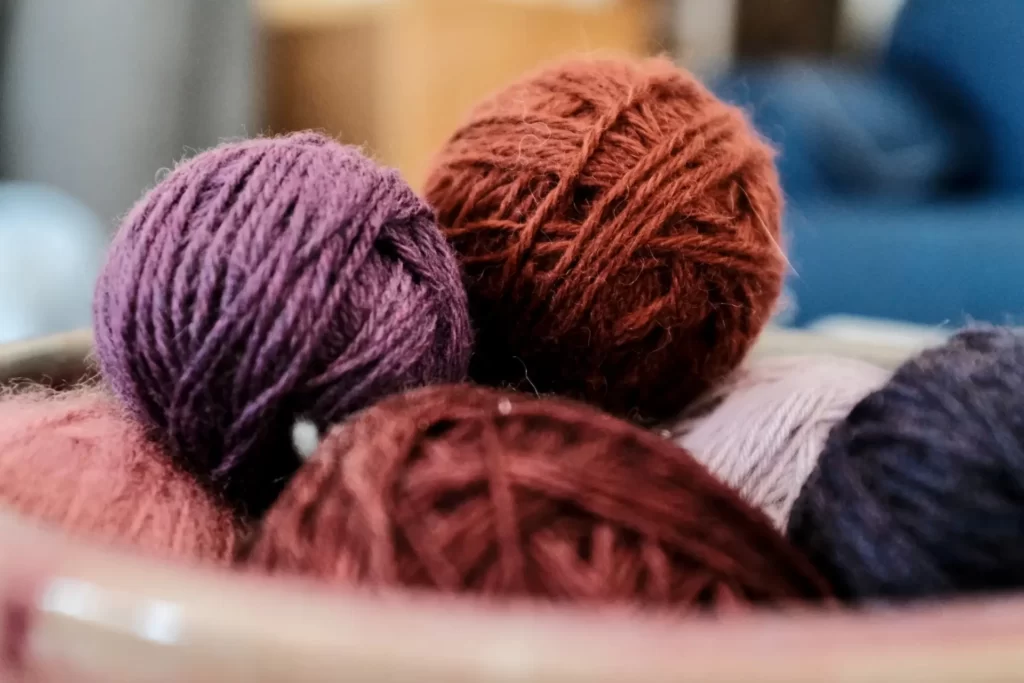
Top 10 Knitting Yarn Brands to Try
When it comes to popular brands of yarn for knitting, there are many options to choose from. According to sales data and customer reviews, these are the top 10 most popular brands:
- Lion Brand Yarn
- Red Heart Yarn
- Bernat Yarn
- Caron Yarn
- Patons Yarn
- Cascade Yarns
- Debbie Bliss Yarn
- Noro Yarn
- Malabrigo Yarn
- Plymouth Yarn
These brands offer a range of yarns, from basic acrylics to luxurious blends of silk and cashmere, and are popular among knitters worldwide. By providing high-quality yarns that are both functional and stylish, these brands have earned a reputation for excellence in the knitting world.
On these websites, you can explore the various yarn collections, patterns, and inspiration for your knitting projects. You can also find helpful resources and tips for knitting with their specific yarns. Additionally, some of these brands may offer rewards programs or customer support services to assist you in your knitting journey.

Best Yarns for Different Knitting Techniques
Choosing the right yarn for your knitting technique is crucial for a successful project. The following are some of the best yarns for different knitting techniques:
Lace knitting requires a delicate, lightweight yarn that will show off the intricate stitch patterns. Silk and cashmere blends are popular choices for lace knitting, as they provide a soft, luxurious drape.
Cable knitting requires a yarn that will hold its shape and definition. Worsted weight wool yarn is a popular choice for cable knitting, as it is durable and has excellent stitch definition.
Fair Isle knitting involves using multiple colors of yarn in a single row. Choose a yarn that is soft and has good color definition, such as a merino wool or alpaca blend.
Sock Knitting: Sock yarn should be durable and strong to withstand regular wear and tear. Superwash wool blends are a popular choice for sock knitting, as they are machine washable and provide excellent stitch definition.
Sweater Knitting: When knitting a sweater, it is important to choose a yarn that will drape nicely and hold its shape. Merino wool or cotton blends are popular choices for sweater knitting, as they are soft, comfortable, and easy to care for.
Chunky Knitting: Chunky yarn is great for quick, cozy projects like scarves and blankets. Look for yarns with a high wool content for warmth and durability, or acrylic blends for easy care and affordability.
By choosing the right yarn for your knitting technique, you can create a beautiful and successful final product. Experiment with different yarns to find the ones that work best for your favorite knitting techniques.
Caring for Your Knitting Yarn: Storage and Maintenance
Proper storage and maintenance of your knitting yarn can help ensure that it stays in good condition and lasts for many projects to come.
Here are some tips for caring for your knitting yarn:
- Store yarn in a cool, dry place: Yarn should be stored in a place that is free from moisture, sunlight, and extreme temperatures. A closet or dresser drawer is a good place to store yarn.
- Use moth repellents: Moths are a common pest that can damage your yarn. Use moth repellents such as cedar balls or lavender sachets to keep moths at bay.
- Keep yarn organized: Keep your yarn organized by sorting it by weight or color, and keeping it in clear plastic bags or containers. This makes it easier to find the yarn you need for your next project.
- Handle yarn gently: When handling yarn, be gentle to avoid tangling or breaking it. Avoid pulling on the yarn too hard, and wind it carefully to avoid tangles.
- Avoid storing yarn in direct sunlight: Direct sunlight can fade the color of your yarn over time, so avoid storing it in a sunny window or other areas where it is exposed to direct sunlight.
- Clean yarn periodically: Periodically clean your yarn by gently washing it in cold water with a mild detergent. Rinse thoroughly and hang to dry. Avoid wringing or twisting the yarn, as this can damage it.
Recycling and Upcycling Knitting Yarn
By recycling and upcycling your knitting yarn, you can reduce waste and create something new and unique. There some techniques can also help you save money and resources while allowing you to express your creativity:
- Unravel old knitted items: If you have old knitted items that you no longer wear or use, consider unraveling them to reuse the yarn. Be sure to wind the yarn carefully to avoid tangling.
- Combine different yarns: Combining different yarns can create a unique and interesting texture for your projects. Try combining different weights, colors, and textures of yarn to create something new.
- Use yarn scraps: Don’t throw away those small scraps of yarn – use them for small projects like coasters or mug cozies. You can also save scraps and combine them for larger projects.
- Dye yarn: If you have yarn that is still in good condition but you don’t like the color, consider dyeing it. You can use natural dyes like beet juice or onion skins, or purchase a dye kit from a craft store.
- Donate or swap yarn: If you have excess yarn that you won’t use, consider donating it to a local charity or swap it with other knitters in a knitting group.
- Use recycled materials: You can also upcycle other materials like t-shirts or old blankets to create yarn for your projects. There are many tutorials available online that can help you turn these materials into yarn.
Future Trends in Knitting Yarn
As the world of fashion and crafting continues to evolve, so does the world of knitting yarn. Future trends in knitting yarn point towards an emphasis on sustainability, natural fibers, and bold, bright colors.
Plant-based and eco-friendly yarns
One trend to watch for is the increasing popularity of plant-based and eco-friendly yarns. These yarns are often made from bamboo, hemp, or recycled materials, and appeal to those who are environmentally conscious. Expect to see more brands incorporating these types of yarns into their product lines.
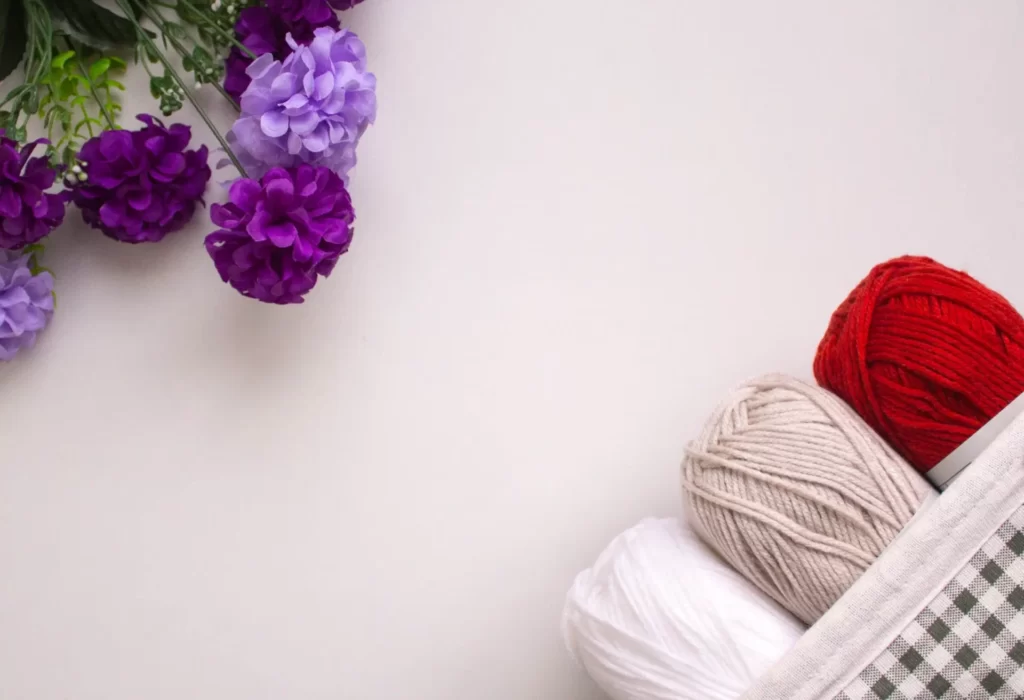
Wool, alpaca, and cotton
Another trend is the growing interest in natural fibers such as wool, alpaca, and cotton. These fibers offer a luxurious feel and are often more durable than synthetic materials. As consumers become more interested in the origin of their products, expect to see more yarn brands highlighting the source of their materials and emphasizing the use of natural fibers.
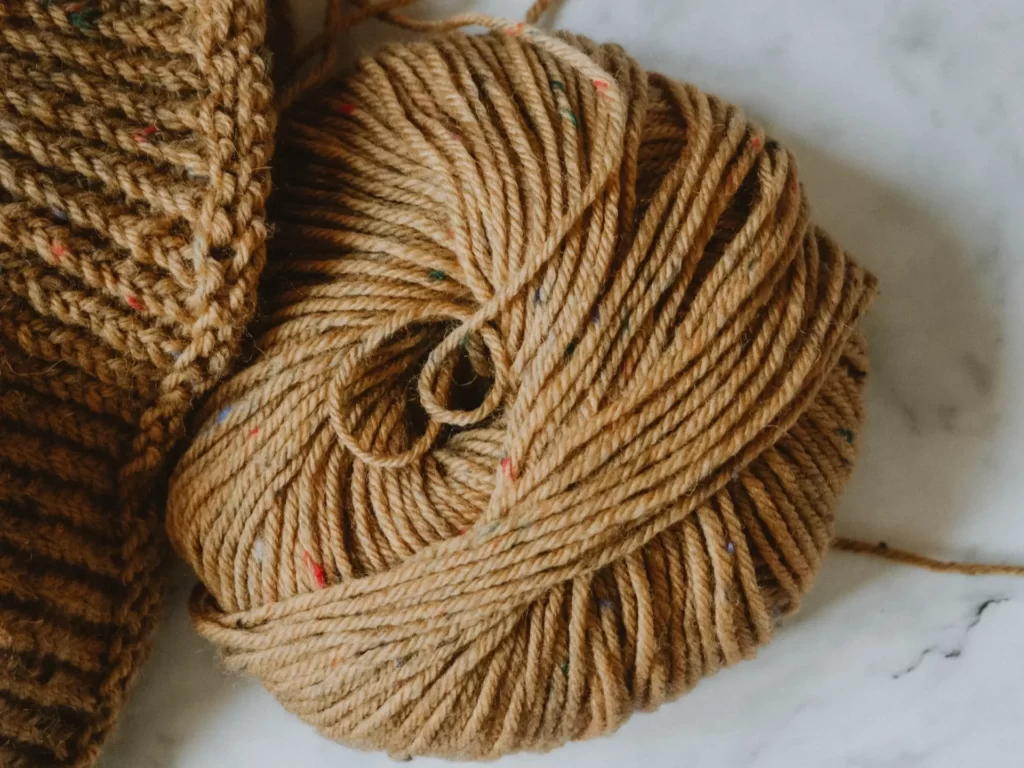
Other
In terms of color, bold and bright hues are becoming more popular. This trend reflects a desire for unique and eye-catching pieces. Look for variegated and speckled yarns that offer a pop of color and depth to projects.
Finally, technology is playing a role in the future of knitting yarn. Smart yarns that incorporate sensors and conductive materials are being developed, allowing for the creation of interactive and functional projects. These yarns offer endless possibilities for innovation and creativity.
In summary, future trends in knitting yarn focus on sustainability, natural fibers, bold colors, and technological advancements. As the world of crafting continues to evolve, we can expect to see even more exciting developments in the world of knitting yarn.
Knitting Yarn FAQs and Troubleshooting: Common Questions and Solutions
While knitting with yarn can be a relaxing and rewarding experience, it’s not always without challenges. In this part, we’ll explore some common questions and troubleshooting tips related to knitting yarn.
- What is the difference between knitting yarn and crochet yarn?
- How do I avoid knots and tangles in my knitting yarn?
- What should I do if my knitting yarn keeps breaking?
- Can I mix different types of knitting yarn in one project?
- How do I prevent my knitting yarn from splitting?
- What should I do if my knitting yarn is too scratchy or rough?
- Can I dye my own knitting yarn at home?
- How do I store my knitting yarn to prevent damage?
What is the difference between knitting yarn and crochet yarn?
Knitting yarn and crochet yarn are essentially the same types of yarn, but the main difference lies in their texture and structure. Knitting yarns are typically smoother and more tightly spun, which makes them easier to unravel and work with using knitting needles. Crochet yarns, on the other hand, are often more loosely spun and have a fluffier texture, which helps to create the unique look and feel of crocheted projects. However, many yarns can be used for both knitting and crocheting, and the choice ultimately depends on personal preference and the specific requirements of the project.
How do I avoid knots and tangles in my knitting yarn?
Knots and tangles in knitting yarn can be frustrating and time-consuming to deal with, but there are some simple ways to avoid them. First, make sure to buy high-quality yarn that is less likely to have knots or breaks. Before starting your project, wind the yarn into a ball or cake, making sure to keep the tension even and avoid creating tangles. When working with the yarn, be gentle and avoid pulling too hard, which can cause the yarn to twist and knot. If you do encounter a knot or tangle, try to gently untangle it using your fingers or a crochet hook, rather than pulling on the yarn, which can make the problem worse.
What should I do if my knitting yarn keeps breaking?
If your knitting yarn keeps breaking, there are a few things you can do. First, check the tension of your knitting and make sure it’s not too tight, as this can put extra stress on the yarn. You can also try switching to a larger needle size to create a looser tension. Additionally, make sure your yarn isn’t too dry or brittle, as this can also cause it to break easily. Finally, if you’re still having trouble, consider trying a different brand or type of yarn that is known for its durability.
Can I mix different types of knitting yarn in one project?
Yes, you can mix different types of knitting yarn in one project, but it’s important to keep in mind that different yarn types have different weights, textures, and properties. This can affect the drape, tension, and overall appearance of your project. If you decide to mix yarn types, it’s recommended to do a swatch test first to see how they work together and adjust your needle size and tension accordingly. It’s also a good idea to choose yarns that are similar in weight and texture, and to avoid mixing fibers that require different care instructions.
How do I prevent my knitting yarn from splitting?
To prevent your knitting yarn from splitting, try using a smaller needle size or switching to a smoother yarn. Make sure to also keep an even tension while knitting and avoid excessively pulling or tugging on the yarn. It can also be helpful to use a cable needle or stitch markers to keep your stitches in place.
What should I do if my knitting yarn is too scratchy or rough?
If your knitting yarn feels too scratchy or rough, there are a few things you can try to make it softer. One option is to soak the yarn in a mixture of water and hair conditioner or fabric softener for about 30 minutes before knitting with it. Another option is to wash the finished project with a gentle wool wash and fabric softener. You can also try using a larger needle size to create a looser fabric, which can make the yarn feel softer. Finally, you can choose a different type of yarn that is specifically designed to be soft, such as alpaca or cashmere.
Can I dye my own knitting yarn at home?
Yes, you can dye your own knitting yarn at home using various techniques such as hand dyeing, immersion dyeing, or using natural dyes. Keep in mind that the type of yarn and dye used can affect the final result, and it’s important to follow safety precautions when handling dyes. It’s also a good idea to do a test swatch before dyeing your entire project to ensure that the color is consistent.
How do I store my knitting yarn to prevent damage?
To store your knitting yarn and prevent damage, it is best to keep it in a cool, dry place, away from direct sunlight and heat sources. Yarn should be stored in a way that prevents tangling and allows it to breathe. This can be achieved by using a yarn bowl, storage bin, or hanging organizer. It is also important to keep yarn away from pets, which can chew or pull at it. If you are storing yarn for a long period of time, consider using a moth repellent or vacuum-sealed bag to protect it from pests. By taking these precautions, you can ensure that your knitting yarn stays in good condition and is ready to use when you need it.
Knitting yarn can be a complex and fascinating material to work with. By understanding some common questions and troubleshooting tips related to knitting yarn, you’ll be able to create beautiful and functional items with greater ease and confidence. Remember to always choose high-quality yarn, follow the instructions on the label, and take good care of your yarn to ensure a successful knitting experience.
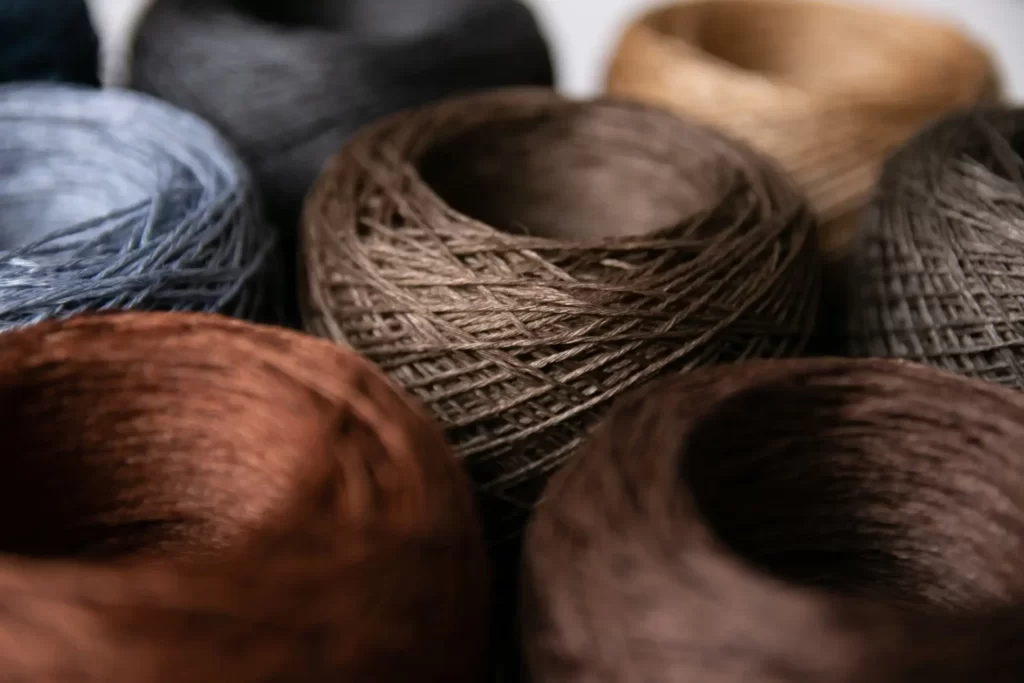
In conclusion
Choosing the right knitting yarn is crucial to achieving the desired outcome of your project. With the ultimate guide to knitting yarn, you now have the knowledge and tools to confidently choose the best yarn for your project. From understanding the different types and qualities of yarn to choosing the right yarn for your project and caring for it properly, this guide covers everything you need to know. With the tips and recommendations provided, you can take your knitting skills to the next level and create beautiful and unique items that you can be proud of.
Whether you are a beginner or an experienced knitter, this guide will provide you with the essential information you need to become a yarn expert. With the knowledge and confidence gained from this guide, you can explore the world of knitting yarn and discover new and exciting possibilities for your knitting projects. So, grab your knitting needles, choose your yarn, and get ready to create something beautiful!
Share this article on your social networks and join our community of needlework lovers!
It's easy - just click one of the icons below:




